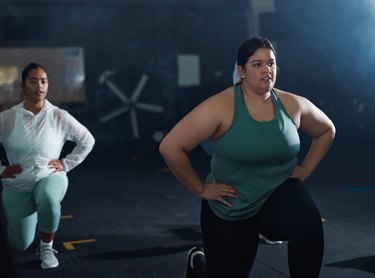The Best Gym Workouts for Weight Loss

The gym is a perplexing place for many people, especially beginners. What exercises should you do? How many sets and reps? How much weight should you lift? And what type and how much cardio do you need to lose weight?
But it doesn't need to be confusing. Any type of gym workout will help you lose weight, and the best routine is one you enjoy doing. That being said, when it comes to how to lose weight at the gym, there are a few types of gym workouts that stand out among the rest.
 The Tropical Secret for Healty Weight Loss Know more
The Tropical Secret for Healty Weight Loss Know more
This is the best selling product with the best Gravity score. Just check it out before you leave.
How to Lose Weight at the Gym
The first thing to note is that the best exercise to lose weight is one that challenges you. But sprinting right out the gate (literally and figuratively) can leave you burned out, discouraged, and worse, injured.
To start seeing results as soon (and sustainably) as possible, you need a balanced strength-training and cardio routine, according to Carolina Araujo, CPT, a California-based strength coach. From there, incorporate a little progressive overload by increasing your workout intensity, weight, sets or reps little by little each week.
"A weekly resistance routine with some cardio on the side is the key to weight loss in the gym," Araujo says.
Start your workouts with dynamic stretches to loosen up your connective tissues. Perform side bends, heel lifts, arm crossovers, shoulder circles, forward leg swings, reverse lunges and alternating toe touches to target your whole body.
You can also perform these kind of gentle movements on their own. Remember, when you feel less stressed, you may find it easier to stick with healthy eating and exercise. Consider yoga or stretching on your days off from cardio and weight training. These practices improve your flexibility and mobility and give your muscles time to recover.
Resistance Training for Weight Loss
Resistance training builds muscle mass, which not only strengthens your body, but increases your metabolism. Muscle is responsible for up to 20 percent of your daily calorie burn, while fat accounts for less than 5 percent, according to the University of New Mexico. In other words, the more muscle you have, the more calories you burn doing day-to-day activities.
There are many different types of resistance-training programs for a variety of goals, whether it's building muscle size, strength or endurance. And any one of these programs is beneficial for fat loss, as long as you're increasing the challenge over time.
Beginners can start their weight-loss resistance plan with just their body weight, according to Araujo. Compound exercises (like squats or deadlifts) are the best place to begin, because they work multiple muscles at once. Perform 10 to 12 reps and 3 to 4 sets of each move. Keeping your rest to 60 seconds or less can help keep your heart rate up.
As you grow more comfortable with your workouts, you can start to add resistance bands, dumbbells or kettlebells to your routine.
"Start with 4 to 5 days of gym strength training per week," Araujo says. "To promote weight loss, make sure you're progressively overloading week after week and try to hit your minimum cardio requirements, too [more on that below]."
 The Tropical Secret for Healty Weight Loss Know more
The Tropical Secret for Healty Weight Loss Know more
This beginner-friendly circuit is a great place to start. As you advance, you can increase the weight or reps of each exercise.

0 Comments